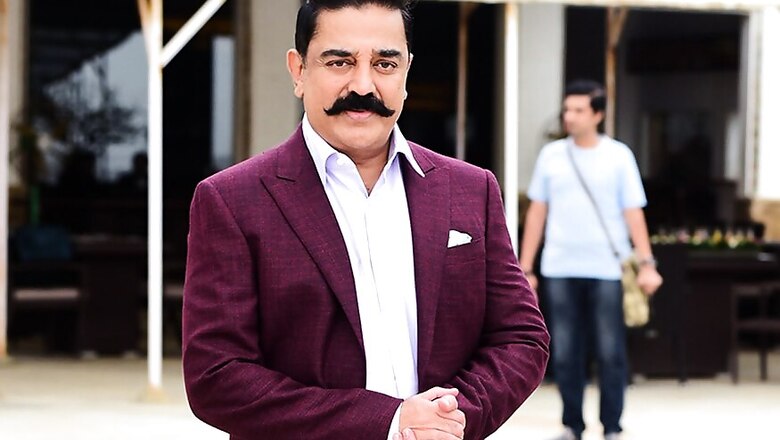
views
The noise of an election campaign is characteristically loud in Tamil Nadu. In every constituency, from Thoothukudi in the south to Villupuram in the north, campaign vehicles criss-cross streets with loudspeakers playing songs and speeches.
Candidates from the two major political formations – the All India Anna Dravida Munnetra Kazhagam (AIADMK)-led alliance with the Bharatiya Janata Paryt (BJP), Pattali Makkal Katchi (PMK), Desiya Murpokku Dravida Kazhagam (DMDK), and others, and the Dravida Munnetra Kazhagam (DMK)-led alliance with the Congress, Left parties, Viduthalai Chiruthaigal Katchi (VCK), Marumalarchi Dravida Munnetra Kazhagam (MDMK), Indian Union Muslim League (IUML) and others – have enormous resources to slug it out. Making equal noise at the street level is TTV Dhinakaran-led Amma Makkal Munnetra Kazhagam (AMMK). The least visible and audible in the cacophony is Kamal Haasan’s Makkal Needhi Maiam (MNM).
The AMMK is fighting hard in every constituency, perhaps harder than the AIADMK and DMK, and is hence establishing itself as a firm third player. This is largely the TTV organisation strength at display, which relies on a “3-30-300 model” to run the party.
Each constituency has three main leaders, with 10 lower-rung leaders reporting to each of them. On the third rung, 10 more workers report to each of the 10 leaders. This set-up gives the party a strong grassroots organisation and accountability for the work done and the money spent.
However, despite his star appeal and campaign rallies across the state, Haasan’s MNM does not seem to have the organisational power or the grassroots presence.
The MNM is contesting all the 39 parliamentary seats, but the party seems to revolve only around Haasan’s star power. While Haasan has visited all the constituencies, the candidates are usually left to fend for themselves and the impact on the ground does not seem very strong.
While everyone knows about the MNM, A Thirumugam of Salem says he is not aware of the local candidate as the entire focus seems to be on Haasan the star. No serious political conversation involves Haasan’s party as a factor in these elections, he claims. This is a common sentiment from voters in most rural parts of the state.
Many of the candidates fielded by the party have an impeccable record in public life. Others, such as R Rangarajan contesting from Chennai South, who quit the civil services to fight against corruption, have worked at the grassroots level for a few years. But there appears to be no party organisation or infrastructure at the grassroots to bolster their presence in these elections.
There is better awareness of the party in urban centres, but even here it seems to be squeezed between seasoned politicians. The MNM has released newspaper advertisements and is active on social media and mainstream media, but it does not have the grassroots mobilisation required for an election.
While Haasan even held village panchayat meetings over the last year, it is difficult to find a party office in most rural districts. Where other parties are concerned, one needs to just ask for their offices at a tea shop in rural areas and immediately get directions and find out the name of a local leader.
The MNM has some local leaders and offices, but people seem hardly aware of it. People are aware of Haasan’s party, but that appears to be the end of it. Further, a campaign requires financial resources and it is clear that the MNM is struggling to keep itself in the race. It neither seems to have a dedicated cadre willing to put in the man hours to popularise the party nor infrastructure that could make a mark in the electoral space.
In effect, the difference between a seasoned politician like Dhinakaran and Haasan is simple. The former has invested not just money but enormous thought in building a party organisation, while the latter seems to believe that his star image and the promise of “clean politics” is all that is required to make a mark.
For instance, when the Aam Aadmi Party (AAP) contested the Assembly elections in New Delhi, it was caught between the loud rhetoric of the Congress and the BJP. However, its grassroots presence and campaign was strong and went door to door. Haasan’s party seems to have failed to do that – it has jumped straight into a parliamentary election before building itself up in a local poll.
Also, Haasan’s campaign schedule and style is not as gruelling as those demanded of a politician. “There is a lot of hope we have as he wants to bring clean politics and promotes youngsters, but an election requires certain skills and understanding and we simply do not seem to have the ability,” admitted a rural candidate on condition of anonymity. “People come to see him as a star, not as a politician.”
Had Haasan contested himself, the stakes would have been higher and he would have received serious attention. While the actor had initially said he would contest the elections in 2018, he chose not to take the plunge in the end. In a sense, the impression is that he has failed to take the bull by its horns.
Haasan had also ideologically positioned himself closer to the Left, but even they have not taken him seriously and have gone with the tried and tested DMK and Congress in the state.
In the end, the campaign trail of 2019 may well prove that not all stars can deliver a hit in the heat and dust of a Dravidian election campaign. The star entrant in Tamil Nadu may have a lot to learn from seasoned politicians on how to work the grassroots.



















Comments
0 comment